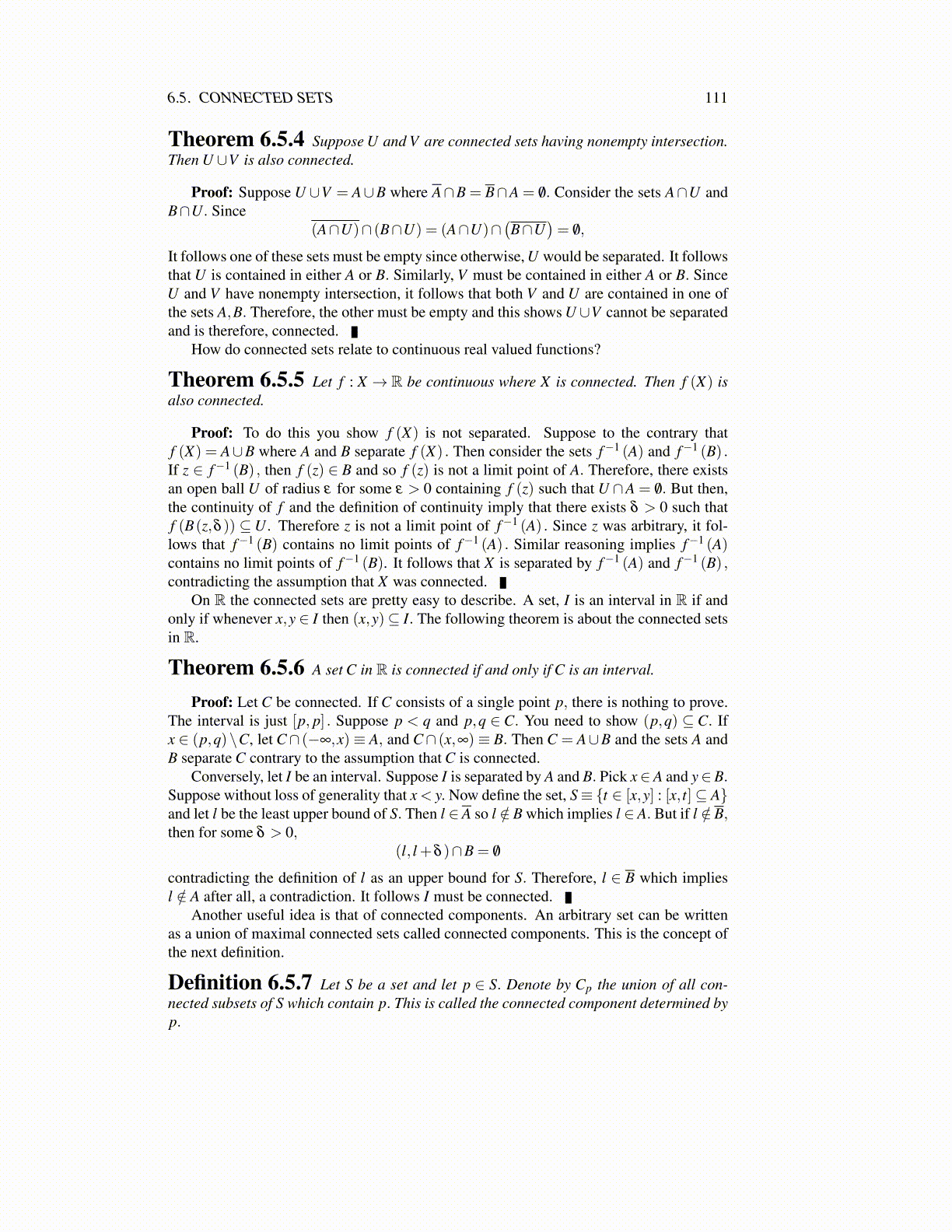
6.6. EXERCISES 111
11. It has been known since the time of Pythagoras that√
2 is irrational. If you throw outall the irrational numbers, show that the conclusion of the intermediate value theoremcould no longer be obtained. That is, show there exists a function which starts offless than zero and ends up larger than zero and yet there is no number where thefunction equals zero. Hint: Try f (x) = x2−2. You supply the details.
12. A circular hula hoop lies partly in the shade and partly in the hot sun. Show thereexist two points on the hula hoop which are at opposite sides of the hoop whichhave the same temperature. Hint: Imagine this is a circle and points are located byspecifying their angle, θ from a fixed diameter. Then letting T (θ) be the temperaturein the hoop, T (θ +2π) = T (θ) . You need to have T (θ) = T (θ +π) for some θ .Assume T is a continuous function of θ .
13. A car starts off on a long trip with a full tank of gas. The driver intends to drive thecar till it runs out of gas. Show that at some time the number of miles the car hasgone exactly equals the number of gallons of gas in the tank.
14. Suppose f is a continuous function defined on [0,1] which maps [0,1] into [0,1] .Show there exists x ∈ [0,1] such that x = f (x) . Hint: Consider h(x)≡ x− f (x) andthe intermediate value theorem. This is a one dimensional version of the Brouwerfixed point theorem.
15. Let f be a continuous function on [0,1] such that f (0) = f (1) . Let n be a positiveinteger larger than 2. Show there must exist c ∈
[0,1− 1
n
]such that f
(c+ 1
n
)=
f (c). Hint: Consider h(x) ≡ f(x+ 1
n
)− f (x). Consider the subintervals
[ k−1n , k
n
]for k = 1, · · · ,n−1. You want to show that h equals zero on one of these intervals. Ifh changes sign between two successive intervals, then you are done. Assume then,that this does not happen. Say h remains positive. Argue that f (0)< f
( n−1n
). Thus
f( n−1
n
)> f (1) = f
( n−1n + 1
n
). It follows that h
(1− 1
n
)< 0 but h
(1− 2
n
)> 0.
16. Use Theorem 6.5.5 and the characterization of connected sets in R to give a quickproof of the intermediate value theorem.
17. A set is said to be totally disconnected if each component consists of a single point.Show that the Cantor set is totally disconnected but that every point is a limit pointof the set. Hint: Show it contains no intervals other than single points.
18. A perfect set is a non empty closed set such that every point is a limit point. Showthat no perfect set in R can be countable. Hint: You might want to use the fact thatthe set of infinite sequences of 0 and 1 is uncountable. Show that there is a one toone mapping from this set of sequences onto a subset of the perfect set.
19. Suppose f : K → R where K is a compact set and f is continuous. Show that fachieves its maximum and minimum by using Theorem 6.3.3 and the characteri-zation of compact sets in R given earlier which said that such a set is closed andbounded. Hint: You need to show that a closed and bounded set in R has a largestvalue and a smallest value.